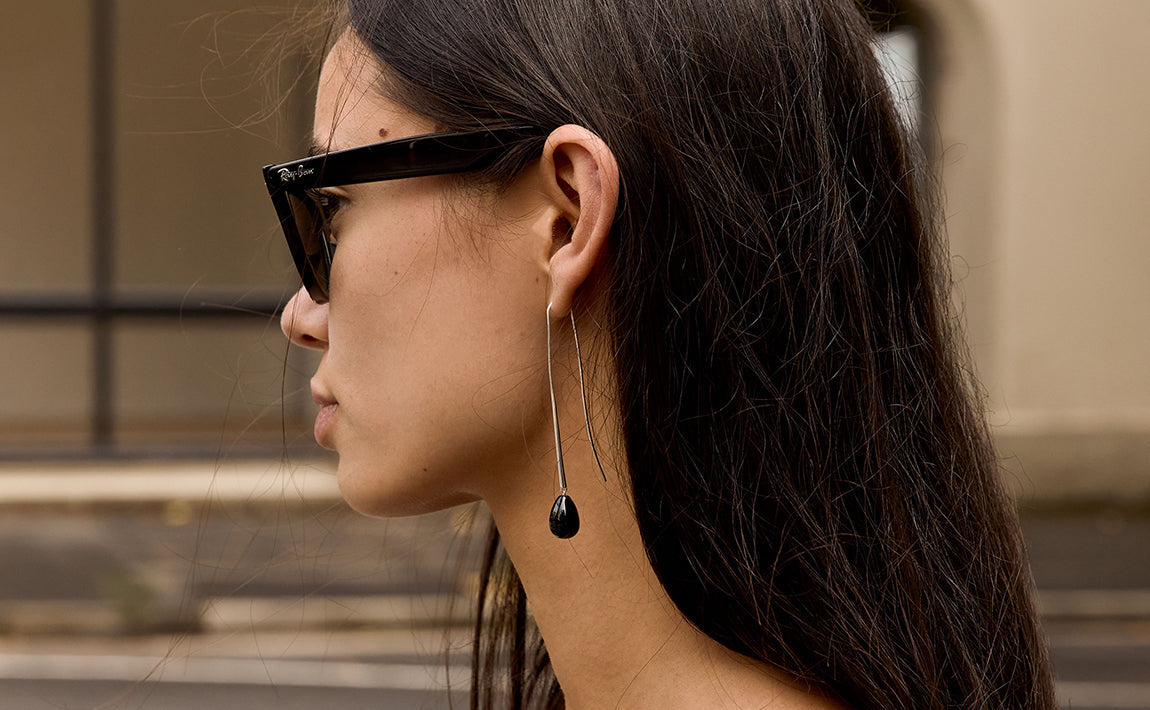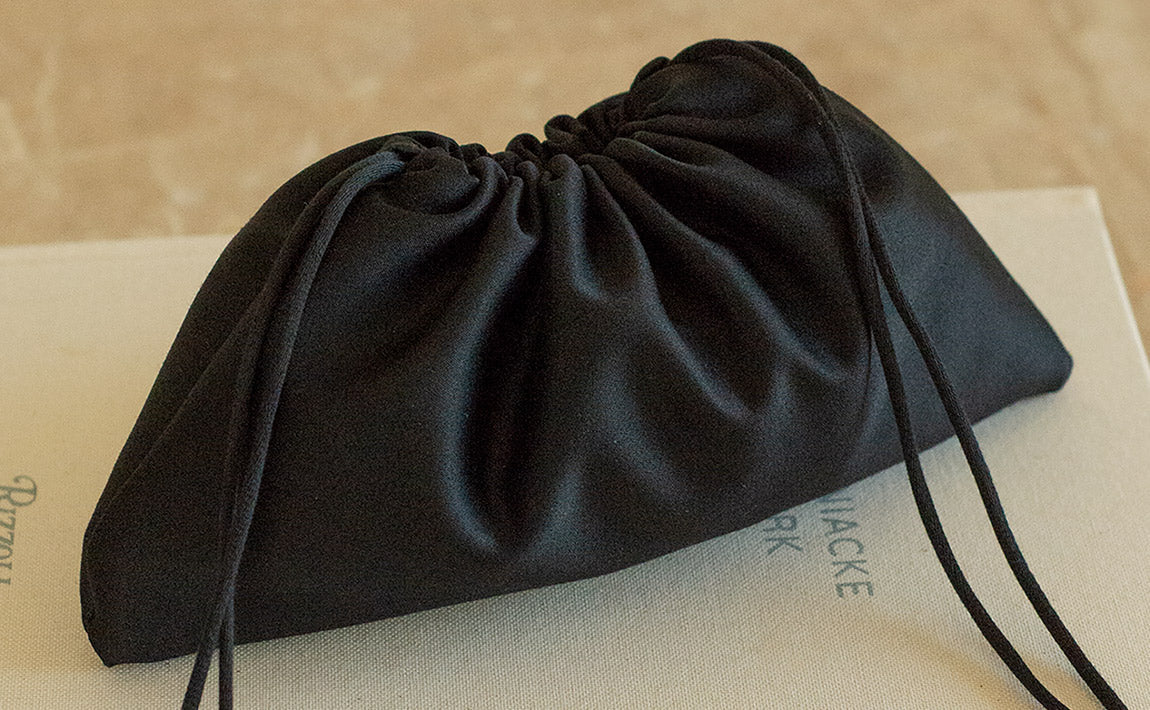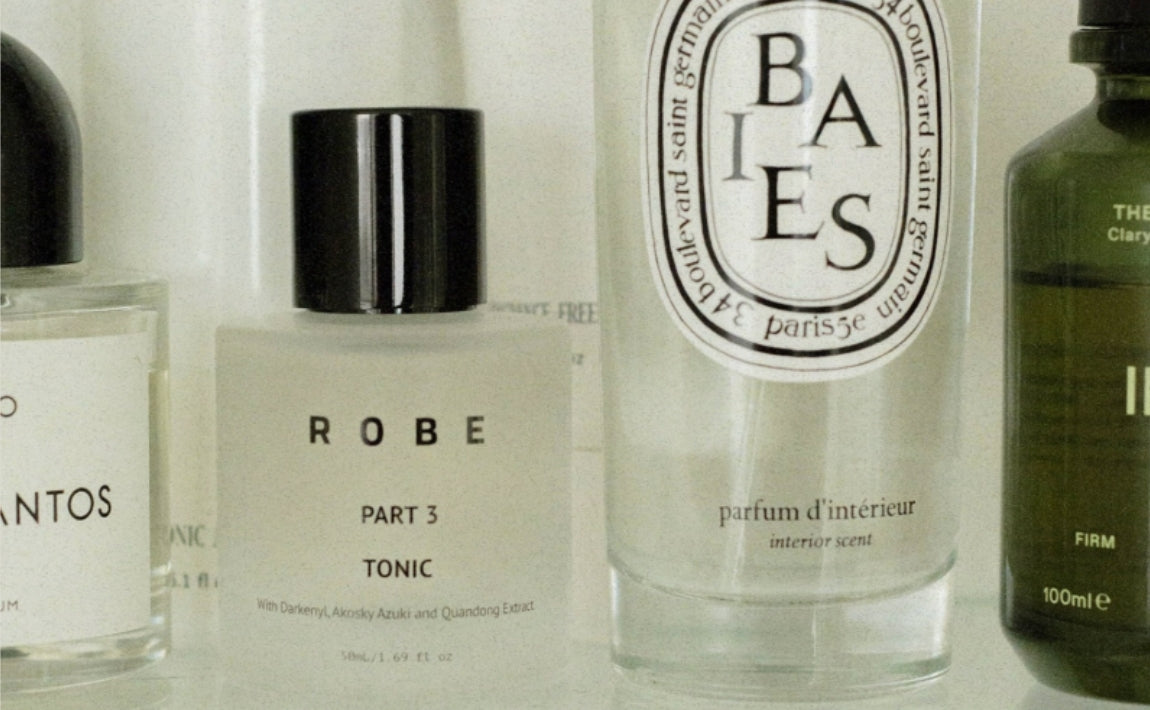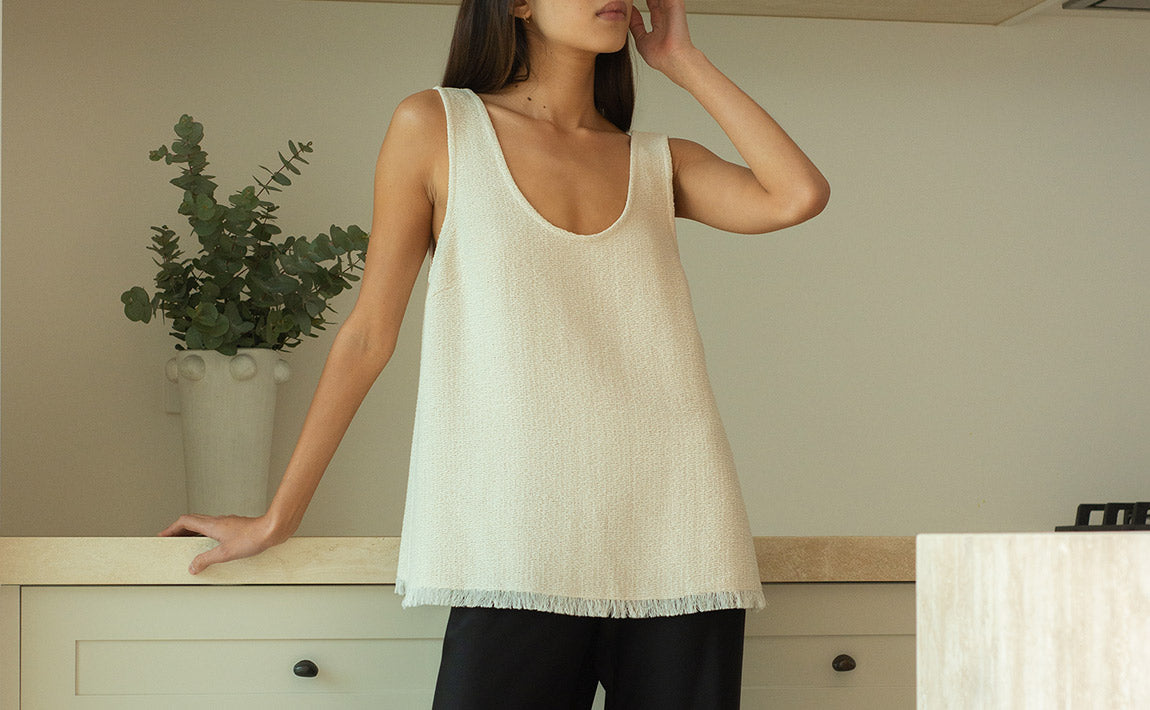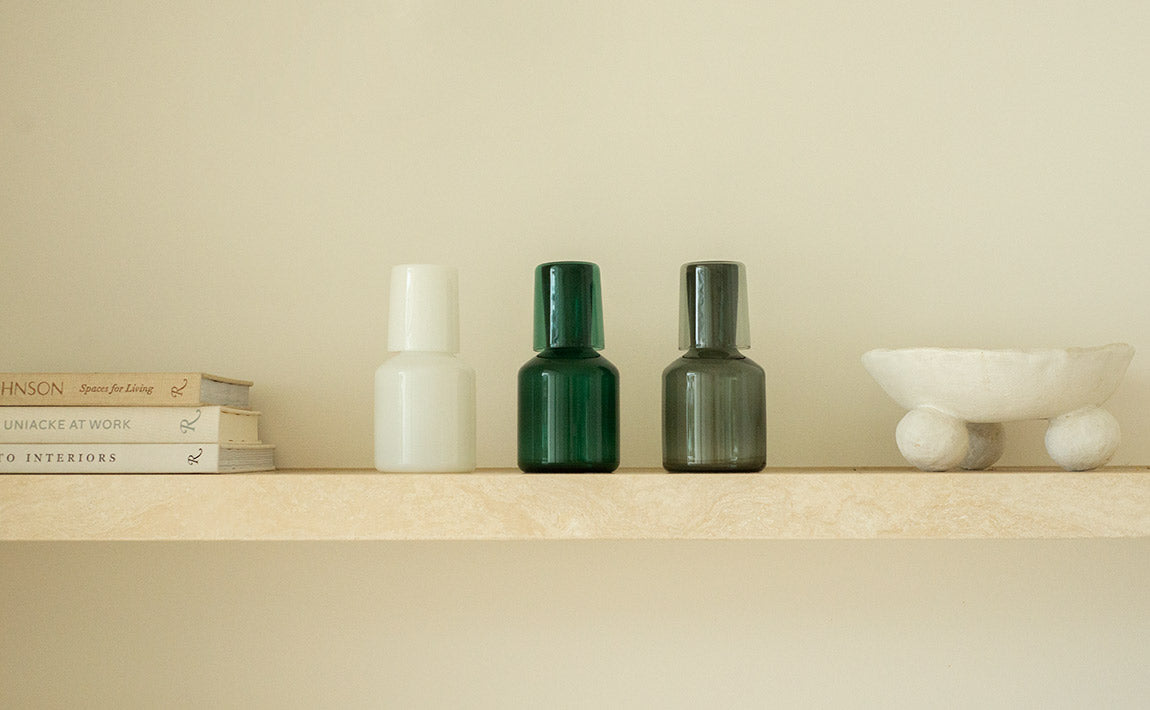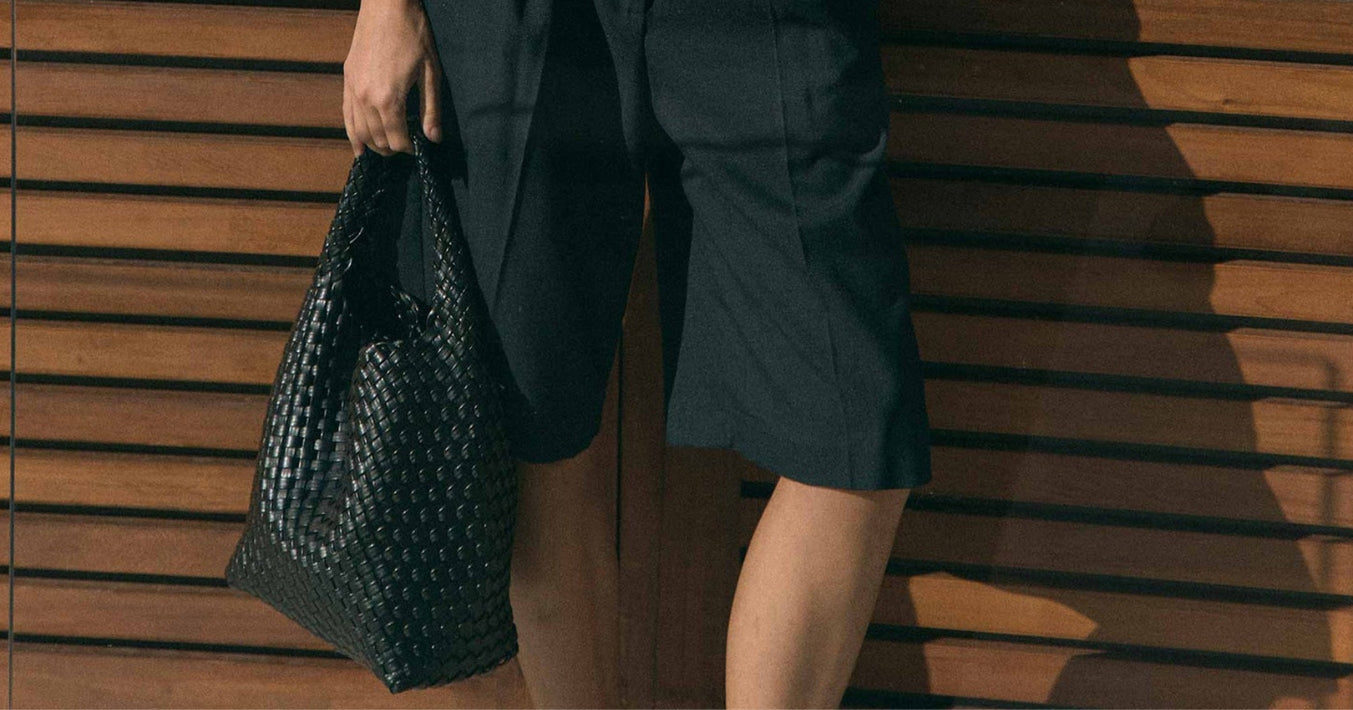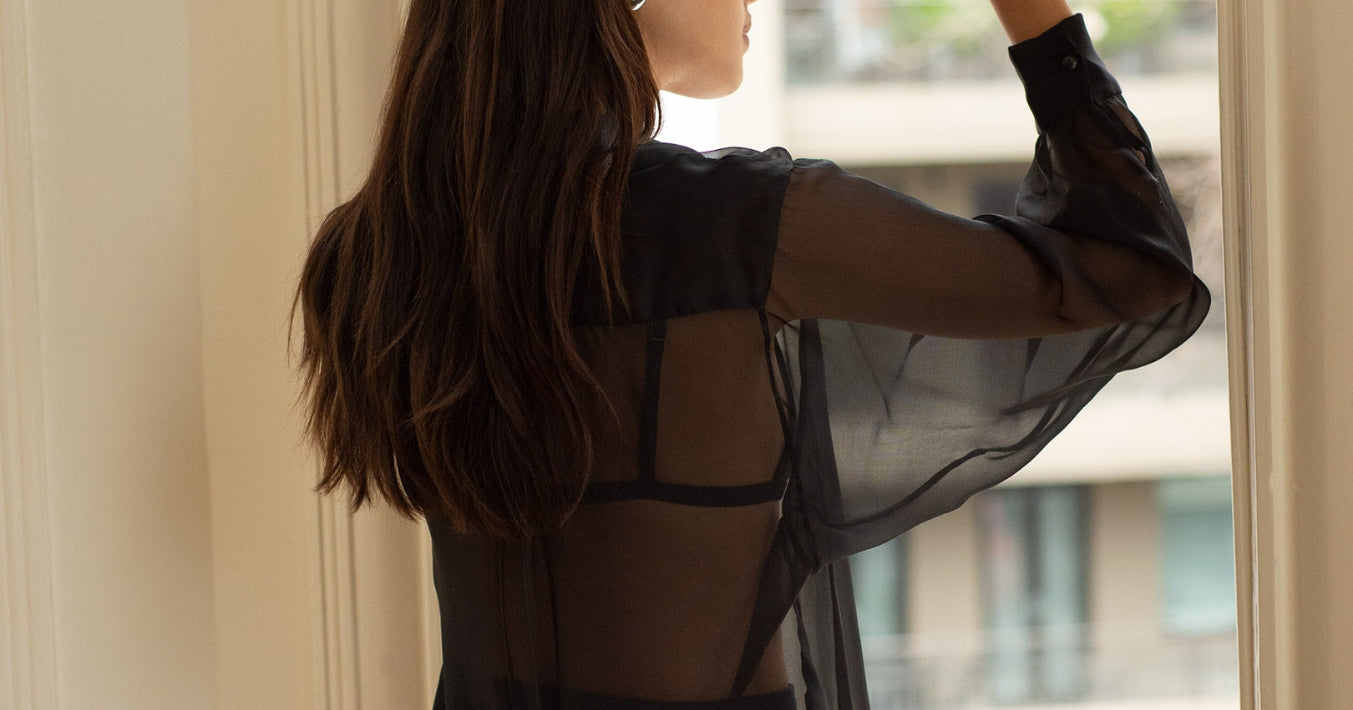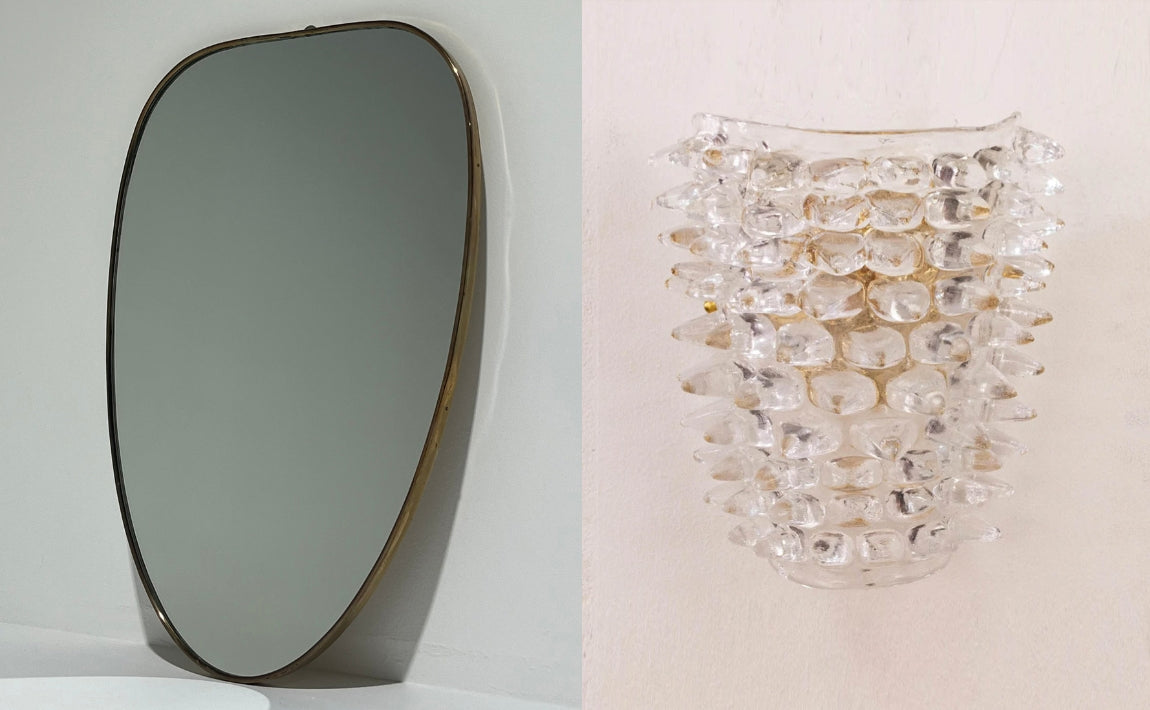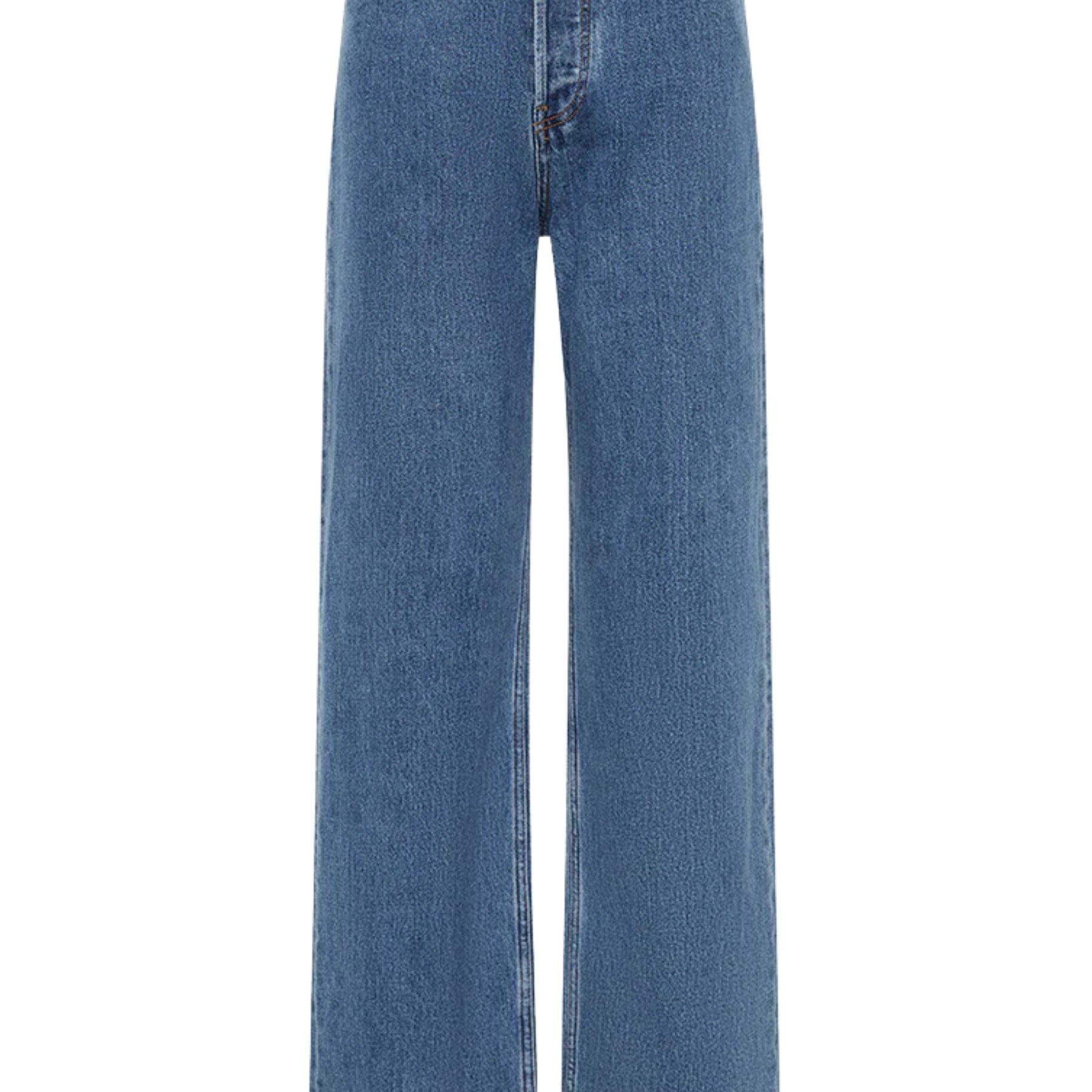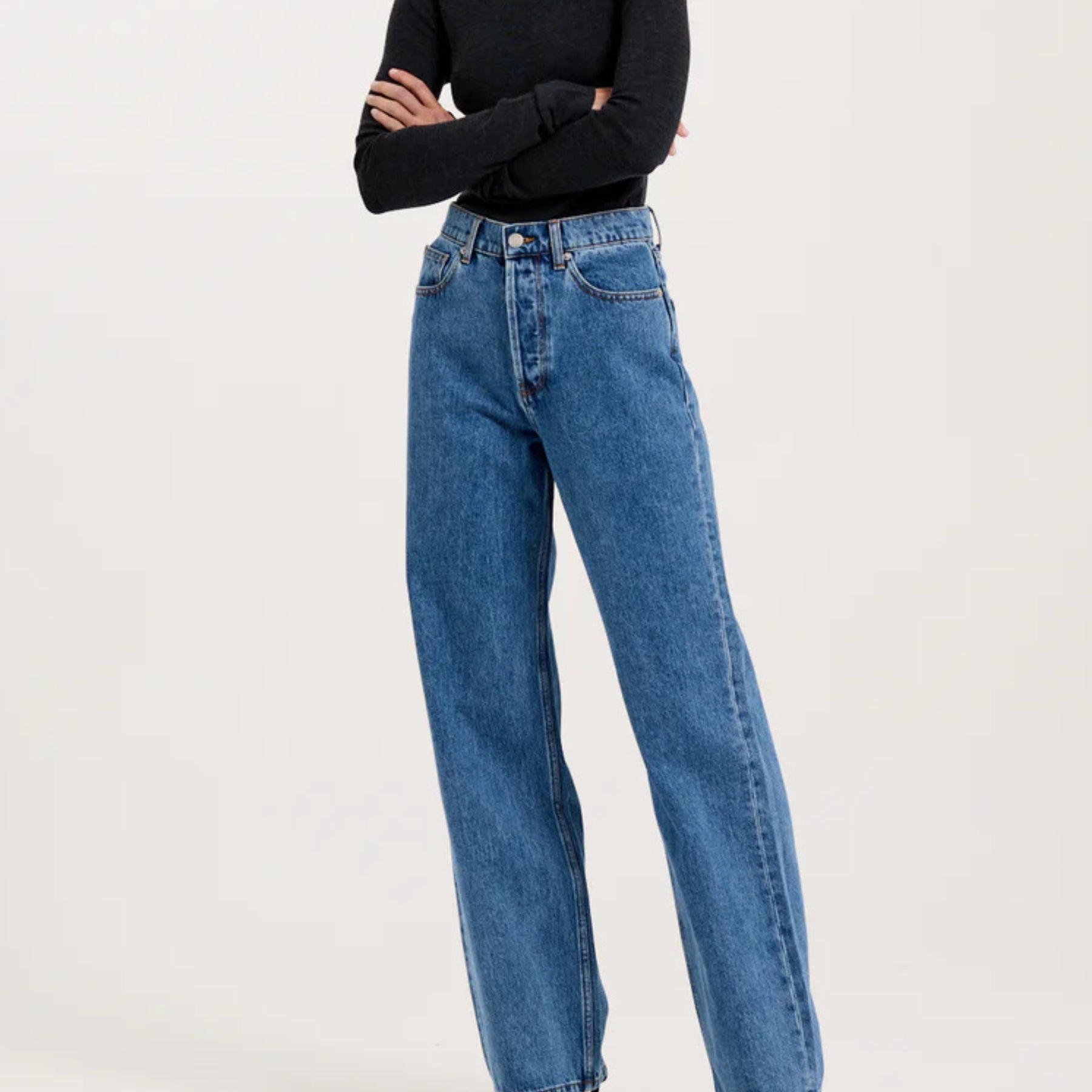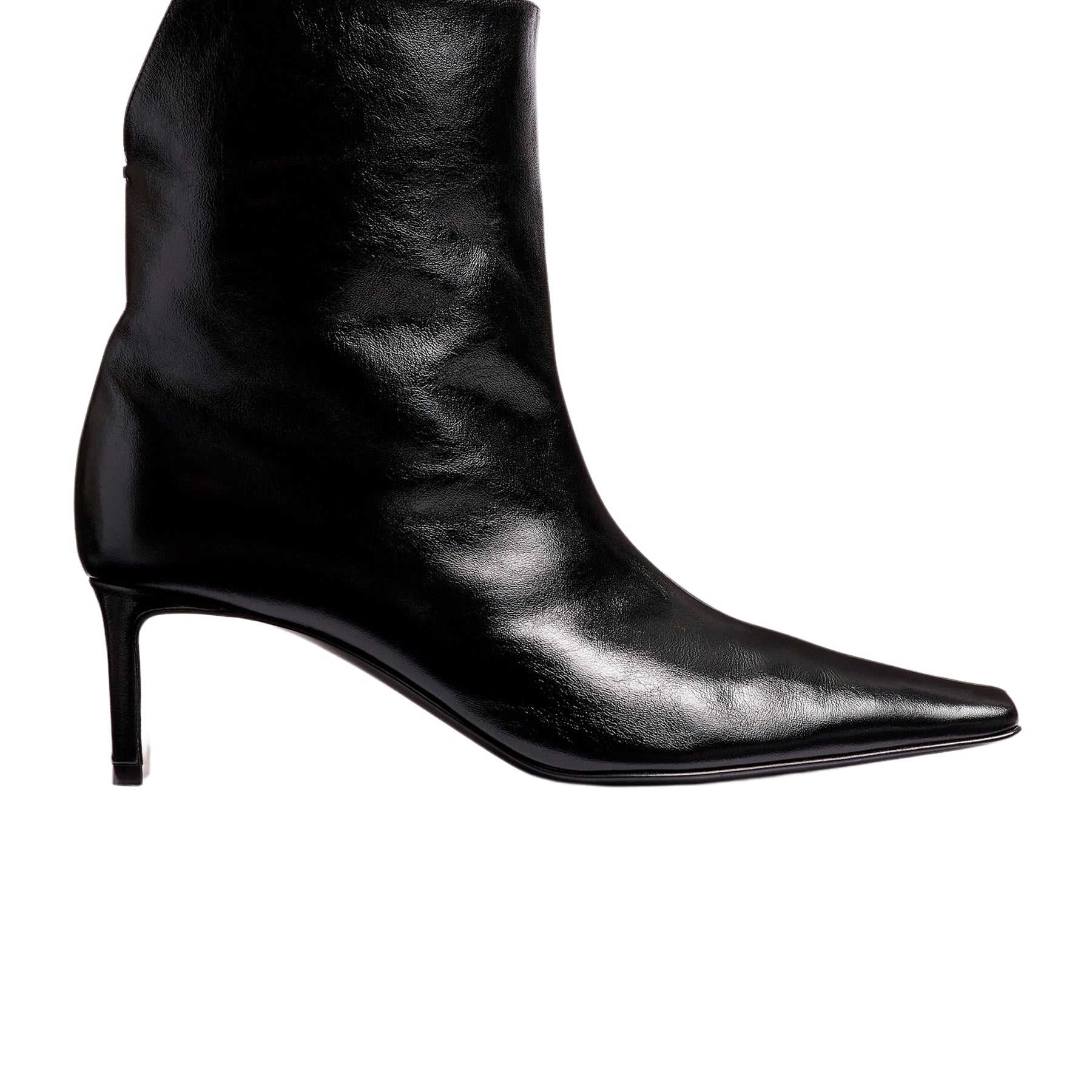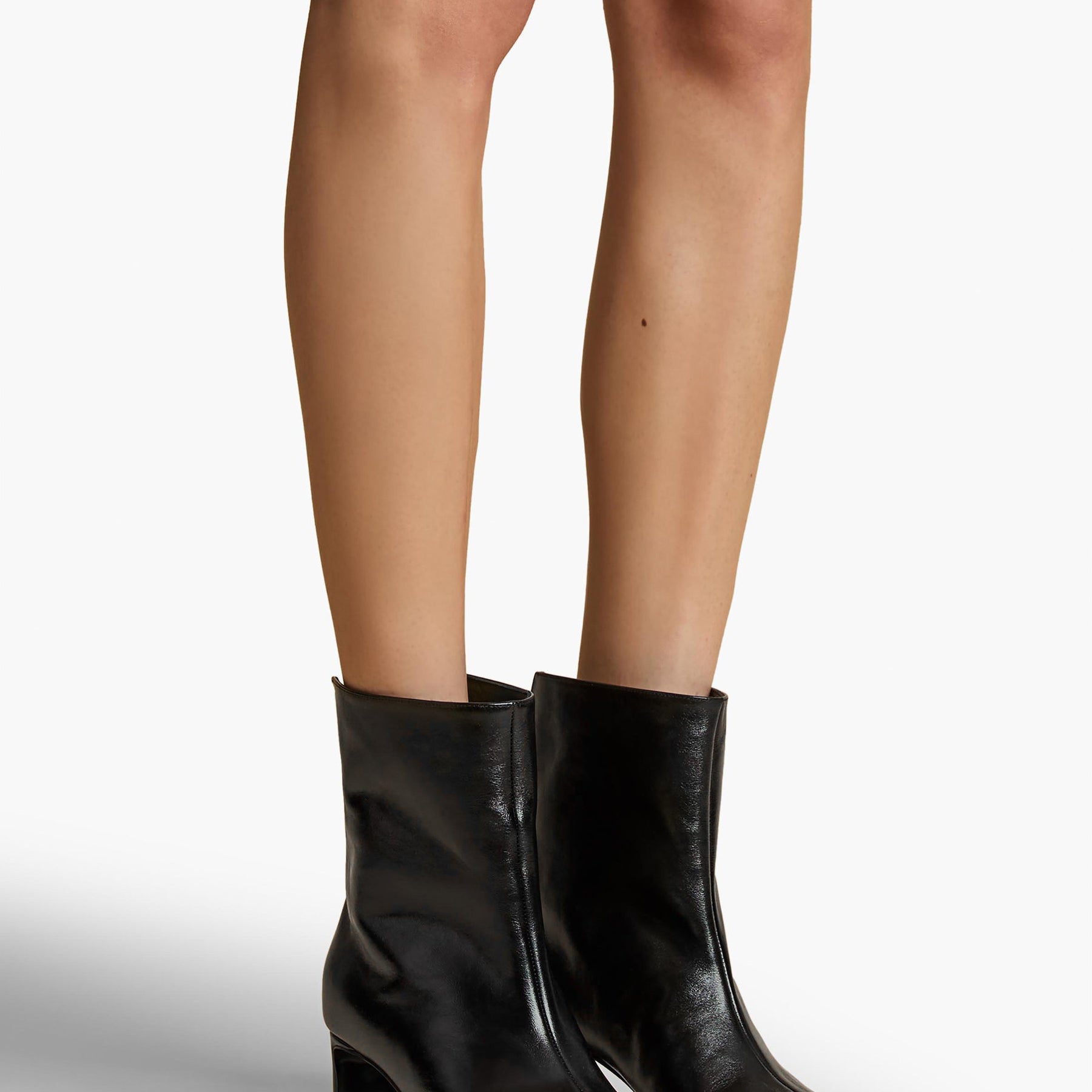Everything You Need To Know About The Most Popular Fabrics

Is everyone sitting comfortably? Because fabric education is about to begin!
I can hear a chorus of groans echoing through my screen but seriously, there’s never been a more important time to educate yourself on what you’re putting on your body. Truly conscious consumers care about what their clothes are made from and how to take care of them as best as possible.
1. Cotton
Ah cotton. This hardy little fabric is the world’s most popular textile, and you’ll find it in everything from towels and bed sheets to jeans, tee-shirts, underwear and more.
Cotton is a natural fibre, grown, spun and pressed into the form that we end up seeing hanging up in our wardrobe. But the important thing to remember when shopping cotton is to choose organic wherever possible. Organic cotton is sustainable, renewable and biodegradable, produced without the use of pesticides and toxic chemicals that poison water supplies and farm workers. Organic cotton also carries no residue from chemicals as none are used in the harvesting and farming process, which means that if you have sensitive skin or allergies you can wear the garment without worrying about a reaction.
In terms of taking care of cotton, the fabric is hardy and durable. Cold cycles on a washing machine and environmentally friendly detergent are your friends here. The only thing you need to watch out for is shrinkage. Cotton will often shrink on the first wash and can also lose its shape when put in a dryer. You can either hang your cotton items to dry on a line or take them out of the dryer while they are still damp, allowing the remaining moisture to evaporate on its own.
2. Silk
One of the most beautiful fabrics in the world, silk is elegant, luxurious and used by all of your favourite designers. It is harvested from silk worms, who line their cocoons with silk threads which are then spun into the fabric we see today.
Something to note: Silk worms are killed in the process of creating this fabric. Some varieties of vegan silk do exist, where the worms are not harmed and the threads taken from their cocoons after they have already left them behind. Similarly, there’s a vast gulf between the natural, free-range silk producers who allow the worms to live in the wild and don’t use chemicals in the harvesting process and those who do. Do your research and find out whether your favourite brands are using ethically farmed silk.
Handwashing in cold water is the usual method of care for a silk garment, though some will require dry cleaning. Unlike other fabrics, you should never spot clean a silk garment. You may leave a stain in one particular area if you do, lightening or darkening the colour by spot cleaning. Wash the whole garment during the stain removal process, or take it to the professionals if it’s something you’re unsure of tackling on your own.
4. Denim
Denim — the trusty, hard-wearing fabric that has cemented itself as a wardrobe essential for decades. From classic blue jeans to versatile jackets and even accessories, denim's versatility and durability are unmatched. What started as a utilitarian fabric has now become a symbol of effortless style.
Denim is a cotton-based textile, typically woven in a twill pattern, which gives it that signature diagonal ribbing. One of denim’s best traits is how it evolves with wear —softening, fading, and developing its own unique character over time. But not all denim is created equal. Look for brands that use sustainable practices, such as Marle, Re/Done and Slvrlake, to minimise the environmental impact. This way, your favourite pair of jeans can be both stylish and eco-friendly.
Caring for denim is easy if you keep a few key things in mind. Denim doesn’t need constant washing, so try spot cleaning or airing it out between wears. When it does need a wash, stick to cold water and mild detergent to prevent fading and shrinkage. To avoid damage, steer clear of the dryer — air drying is the way to go to help your denim maintain its shape and longevity.

4. Linen
Spun from the flax plant, linen is the friend of all hot people. And I mean physically hot: Linen is the best fibre for keeping you cool on summer days. The weave allows for breathability around your skin and the stiffness of linen keeps the fabric away from your body, drying out quickly as the air moves around it.
Linen is biodegradable when undyed, which means you should try and purchase linen in shades of grey, tan, ivory and ecru. These happen to be both linen’s natural colours and chic neutrals for your wardrobe’s building blocks. It’s also versatile, sustainable and durable to boot, making it one of the most environmentally friendly fabrics you can buy.
Caring for your linen items is easy, too. They can be washed in the washing machine and hung out to try. Seriously, other than the fact that linen crinkles easily, there’s very little to fault with this fabric. Look for pieces from Matteau, Bondi Born and Matin and make linen the MVP of your wardrobe.
5. Nylon
If you own something stretchy, like a pair of tights, say, you’ve got some nylon in your wardrobe. Nylon is one of the most prevalent plastic fabrics on the market found in everything from underwear to your exercise gear.
The bad news is that, as a plastic, nylon is not biodegradable, meaning that your discarded nylon items will be found in landfill for decades. Historically, the production of nylon has had a severe impact on the environment, using high amounts of energy and water and producing greenhouse gases as a side effect.
The good news is that there are some producers who are working to create more environmentally friendly iterations of nylon. For example, there are brands that have started to work with nylon fashioned from recycled plastic such as fishing nets.
6. Wool
Where would we be without wool? Very cold, I imagine. We have sheep to thank for this 100% natural fibre that forms the backbone of our winter wardrobes, whether knitted into jumpers and cardigans or spun into fine threads and used to make coats and jackets. However wool is also found in lighter weight trousers and skirts, an ideal combination since its breathable and doesn't crease easily.
Renewable, biodegradable and highly resilient, wool is a low impact textile with a robust production network found locally here in Australia and New Zealand. (Look for the Australian Wool Exchange or Woolmark symbols when buying wool items.)
If you care correctly for your woolen pieces they can last a lifetime. Invest in a specialty woolen detergent and either handwash or machine wash, if your washing machine is fitted with a wool cycle. When dried flat, woolen pieces will not shrink, and keep them away from the dryer if you don’t want them to matt.
7. Polyester
This synthetic fabric is one of the most popular in the fashion industry. It’s cheap to produce and purchase, easy to care for, sturdy and lightweight. It retains its shape, dries easily and tends not to crinkle or crease.
But – you knew there was a but coming, didn’t you? – it’s synthetic, which means it’s made from plastics, which in turn means that it’s not biodegradable. All your discarded polyester items will sit in landfill. Also, polyester doesn’t breathe, which means it can be a difficult fabric for those with sensitive skin or allergies to wear.
Like nylon, there are recycled polyesters on the market, particularly those fashioned from old plastic bottles. Australian brands like Kit X and global labels like Stella McCartney are leading the charge here, sourcing recycled polyesters to use in their collections.
The most crucial consideration when incorporating polyester into your wardrobe is choosing timeless styles. Since polyester will last, get the full benefit of this long lasting fabric and build a wardrobe of items you'll be wearing and re-wearing for a very long time.
8. Rayon
Rayon and cotton are cousins of sorts, both stemming from regenerated cellulose fibre. Cotton gets its cellulose from the cotton plant, however, whereas rayon gets its cellulose from wood pulp. The process is a lengthy one, and chemicals have to be used in order to ensure that the trees produce enough cellulose to create the rayon. The finished product is a fibre that can be blended with others, such as cotton, polyester and silk.
What makes rayon useful in the fashion industry is that it is multi-tasking and multi-purpose. It can adopt the properties of everything from linen to wool to silk, can easily be dyed and worked with. However it is not that sturdy and often requires handwashing in order to prolong its shelf life.
The problem with rayon, though, are all the chemicals used in the creation of it. These chemicals not only damage the environment but can be hugely damaging to the workers in the rayon industry. According to Dr Paul Blanc, a professor at the University of California, rayon has led to heart attacks, strokes, Parkinson’s disease and other serious, chronic health problems for those in the rayon industry.
-
With all this said, it's up to you to create demand for ethical and sustainable fabrics, and if not available, then choosing classic styles that won't end up in landfill is the next best solution. Shop thoughtfully and look after your clothes. Read our recent post on how to take better care of your belongings.




